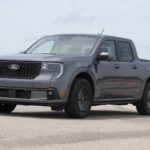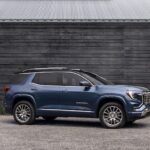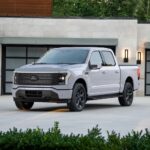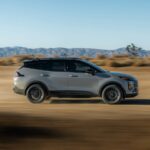The marketing hype will, naturally, trumpet that the all-new 2014 Toyota Corolla is a groundbreaking vehicle which will transform the way America thinks about compact cars.
But is it? Well, not exactly. But that doesn't make the Corolla a failure by any stretch.
Consider this: The Toyota Corolla's been around for 47 years, making it older than many of its drivers. It's a familiar nameplate with a longstanding reputation for reliability and dependability … but it's also known for being paralyzingly boring. The Corolla has soldiered along with minimal changes since 2008. And for all of that, it remained the No. 2 best seller in its class through 2012. That's not a recipe you want to mess with much, if you're Toyota.
Unfortunately, the Corolla got caught flat-footed in 2010 or so, when a bunch of new competitors -- namely the Hyundai Elantra, Kia Forte, Ford Focus and Chevrolet Cruze all took big leaps forward in quality and style, right in the middle of the Corolla's product cycle. Suddenly, the Corolla's reputation for rock-solid reliability and relatively modest appointments weren't enough. Cars such as the Mazda3 and MINI Cooper have made subcompacts into aspirational vehicles rather than stepping stones or purely finance-dictated decisions, and most of the Corolla's competitors have followed suit.
As a result, Toyota's angling for a more youthful image and a premium feel with the new car. The hardware and chassis updates are mostly evolutionary, bringing the Corolla up to the current standards for economy and power. The big deal with the Corolla this time around is styling. It's instantly noticeable. A lower roofline and longer wheelbase give the Corolla a svelte, elegant look. It's more aggressive too, thanks to sharp-edged head lamps and a deep lower grille. In the sporty SE model, the grille is piano-black and trimmed with chrome. A dramatically sloped windshield and longish greenhouse emphasize the Corolla's improved interior room. Subtle aerodynamic tricks such as underbelly panels and vortex-generating ribs in the tail lamps and side mirrors help to smooth the Corolla's path through the air. LED head lamps are standard. If it looks like a Camry written small, that's no accident; the Corolla picks up several styling cues from its larger sibling.
The interior takes an even greater step forward, and goes a long way toward giving the new Corolla a hint of personality. It's larger and looks much more elegant than the dull gray box it replaces. Rear seat legroom is dramatically improved, and it's comfortable even for 6-footers. The wall-to-wall dash makes the interior feel wider while the flow-across design is almost a retro touch. It features a trim line that's available in blue or amber, a central touch screen, and a contrasting argent or aluminum-finish panel just to keep the style level high. High sills and a lower roof give the Corolla a more closed-in feeling, though the seats are height-adjustable to mitigate this somewhat. The seat fabric and door panels feature special stitching and upscale cloth, and the Corolla offers a choice of five different interior colors, banishing the gray plastic forever. The list of standard equipment is generous as well, including power windows, a driver's knee airbag and Bluetooth. Optional equipment includes a backup camera and automatic climate control.
Toyota's Entune infotainment system is available on the Corolla LE and S. With Entune, the Corolla features a 6.1-inch touch screen, and streaming music capability. An entire suite of apps is now free to existing Entune customers as well as new buyers, and includes Bing, iHeartRadio, Yelp, Pandora, Movietickets.com, OpenTable, sports and stocks. Upgrading to the Entune Premium with Navigation adds maps, of course, as well as real-time traffic and weather updates. Entune also includes voice-recognition and a "training" mode so that the Corolla can learn your voice.
Mechanically, the Corolla's been updated, but the general modus operandi is the same. Power's provided by a 1.8 liter four-cylinder with dual overhead cams, variable valve timing and 132 horsepower. The new Corolla LE Eco model uses Toyota's new Valvematic system, which varies valve lift on the intake valves, controlling intake air and allowing the engine to respond to different conditions. It sounds like variable valve timing, but it actually works with the VVT-i system to increase air in the intake manifold at higher speeds, resulting in faster throttle response. The Eco engine produces 140 horsepower. The Corolla's updated continuously variable transmission offers smoother transitions, and when in Sport mode, it offers seven distinct shift points and feels more like a standard automatic transmission. Engine braking also is available in the B mode, for long downgrades. In the Corolla S, more sporty algorithms and steering wheel paddle shifters provide the driver with greater control. A six-speed manual transmission also is available. With the CVT, the Corolla LE Eco's 42 mpg freeway fuel economy actually is better than the original Prius, according to Toyota.
With the suspension, Toyota targeted the Ford Focus, Hyundai Elantra and Chevrolet Cruze as benchmarks, showing just how far the competition has come. The Corolla's got MacPherson struts up front and a torsion beam rear. Yes, the old beam axle is still there, but the toe-control mounts at the rear have been changed from vertical to diagonal mounts, improving dynamic feel without compromising rear-seat room -- which, in case you were wondering, is the reason for the suspension's longevity in the Corolla. And it works. On the road, the new Corolla splits the difference between sporty and comfortable nicely, falling between the corner-carving Ford Focus and the smooth-driving Hyundai Elantra. The new rear suspension provides stable footing and predictable handling, so the Corolla hangs on in tight corners much longer than you'd expect. Understeer eventually kicks in, but the car quickly self-corrects when you lift off the gas. The brakes are strong and the steering feel has been greatly improved as well. The Corolla feels confident and engaging on the road, and the handling has been tightened up without making the suspension stiffer, so it's comfortable on the freeway as well. The Corolla is no hot hatch, and the handling is still generally sleepy, but the limits have been raised enough that there's a general feeling of competence in the way the car drives.
And that's where the Corolla's success lies. The car itself is still pretty conventional, but it's become important for subcompacts (and many other cars, really) to have a personality. What once was a class of relatively faceless gray-lined boxes now features the Hyundai Elantra as the Stylish One, the Honda Civic as the Futuristic One, the Kia Forte and Dodge Dart as the Perky Ones, the Mazda3 and Ford Focus sharing space as the Sporty Ones, and the Chevrolet Cruze as the American One. Quality and reliability have become more or less equal across the board, and the sudden infusion of attitude left the Corolla as the Bland One. Toyota seems to be aiming to reposition the Corolla as the Sensible One. The new car is stylish, in a conservative, almost retro way, and it's clearly designed with commuting in mind. The Corolla's got a reputation for being the car for people who don't like cars, but that doesn't mean it can't have some style.
Corolla pricing starts at $16,800. The Corolla LE Eco adds the Valvematic engine and takes the bottom line to $18,700, while the sport-touched Corolla S comes in at $19,000.






